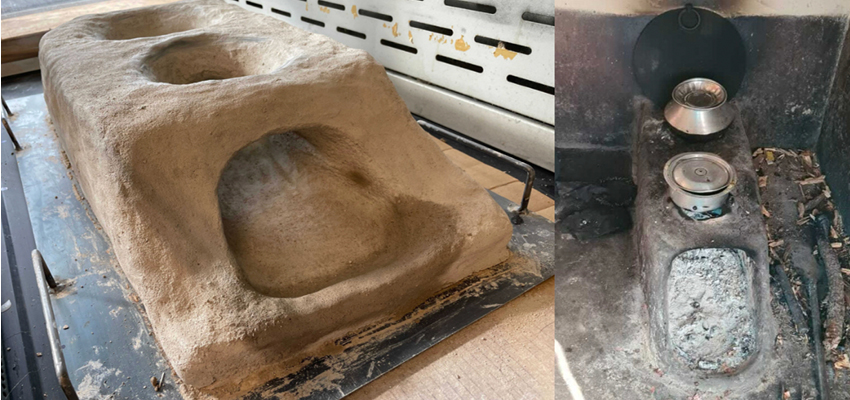
SM Thesis: An Evaluation of Household Energy Systems in the Himalayan Region
Abstract
Biomass cookstoves are prevalent in rural areas in developing countries around the world. The smoke from biomass burning results in high levels of household air pollution, which cause respiratory and pulmonary diseases. While many improved stoves have been developed to increase cooking efficiency and reduce household air pollution levels, the Himalayan region presents unique implementation challenges in its remoteness and the high space heating needs faced by households. In order to characterize the performance of existing Himalayan stoves, a handmade two-pot clay stove based on traditional north Indian stoves was constructed and tested in D-Lab with the Water Boiling Test. The stove's efficiency was found to be between 13 and 16\%. The addition of a grate did not significantly change stove performance, and the addition of pot stands concentrated more cooking power on the front cooking vessel but did not improve overall thermal efficiency. The results from field visits to north India and Nepal in January 2022 are also presented. The cooking efficiencies of stoves in the field ranged from 4 to 13\%, and stove thermal efficiencies were found to negatively correlate with fuel use and test duration. Households' ambient indoor temperatures and pollution levels increased when their biomass cookstoves were fired. Ambient particulate matter levels in the field were found to be two to three orders of magnitude above World Health Organization standards, and average indoor temperatures were below the accepted standard. Chimneys approximately halved pollution levels, but did not remove all pollution from households. Pollution levels within a household were found to increase with colder weather, due to space heating needs being met with increased operation of biomass stoves. Due to the strong connections between cooking and heating in the Himalayan region, a new methodology is proposed for the holistic evaluation of household energy for communities which use biomass stoves.
More information
MIT D-Lab Research: Household Energy Efficiency, Biomass Fuels and Cookstoves
Contact
Dan Sweeney, MIT D-Lab Research Scientist

